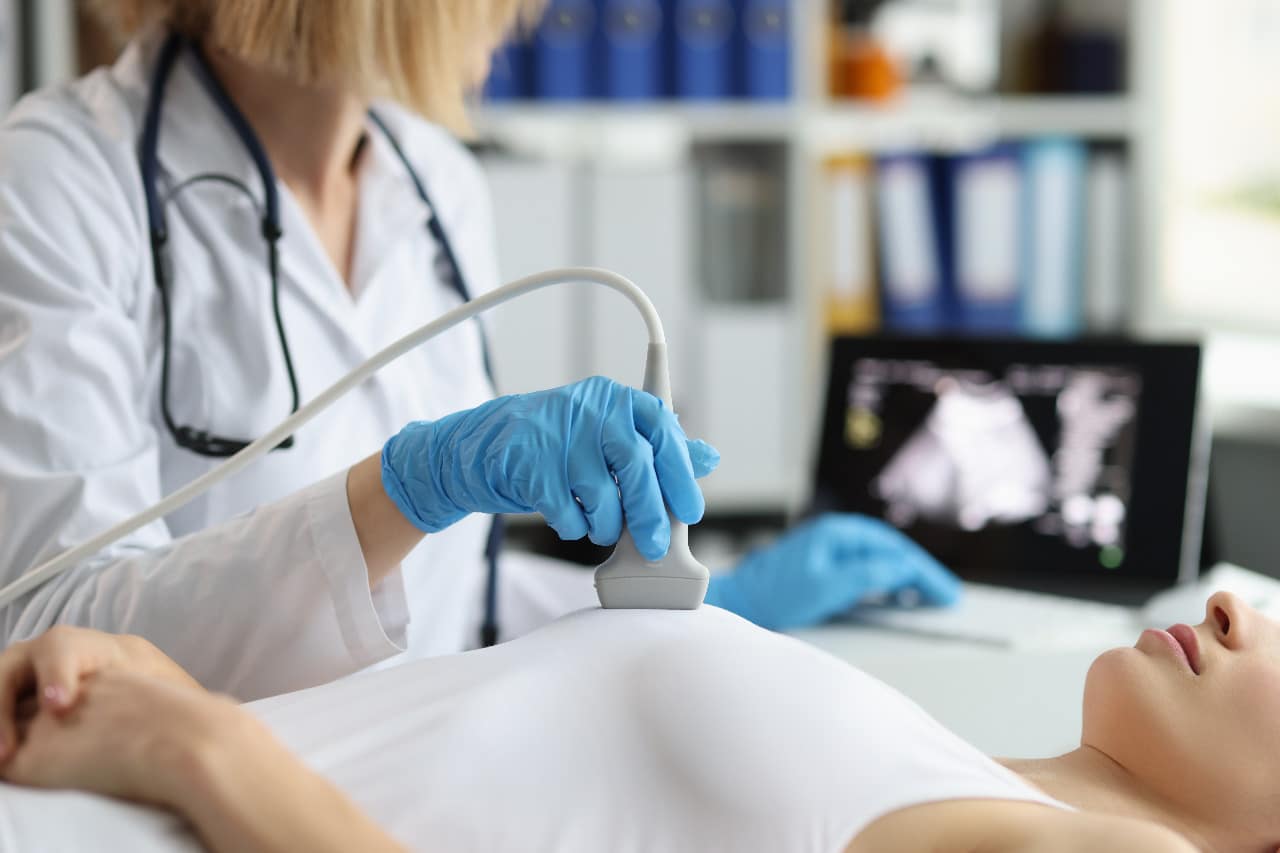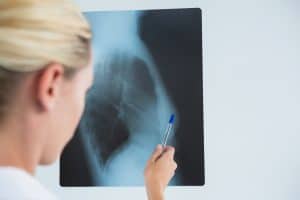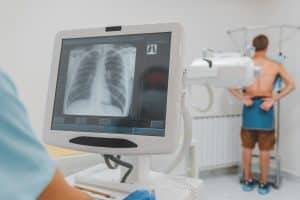A doctor may request a breast ultrasound to look for tumors or other abnormalities identified during a physical examination, mammography, or breast MRI. Ultrasound is non-harmful, safe, and radiation-free.
What is breast ultrasound?
A breast ultrasound imaging procedure uses sound waves to look within your breasts. A breast ultrasound creates finely detailed images of the interior of your breast using high-frequency sound waves. Radiologists can determine whether a lump is solid or fluid-filled with the use of breast ultrasounds’ finely detailed, high-contrast images.
When is a breast ultrasound needed?
Mammography, a type of X-ray used to screen for breast cancer, is frequently followed by breast ultrasound.
If a physical examination or mammogram indicates any of the following breast anomalies, a doctor may recommend a breast ultrasound:
- You have a breast lump.
- A painful or sore spot on your breast
- An odd discharge from your nipple or a change in the texture or appearance of your breast skin
- An ultrasound can help your doctor decide whether a lump in your breast is a solid tumor or a cyst filled with fluid. They can use it to locate the lump and measure its size.
A breast ultrasound rather than a mammography may sometimes be used to check for breast cancer. Examples include:
- When a mammography machine isn’t accessible.
- Pregnant women and persons under 25 shouldn’t be subjected to radiation from a mammogram.
- In women with dense breast tissue, which makes cancers less visible on mammograms.
- It is also possible to utilize a breast ultrasound to look for leaks or other issues with breast implants.
- Insertion of a needle to collect tissue for a biopsy from a mass. Pathologists will examine the tissue under a microscope to determine whether the tumor is breast cancer.
How do I prepare for a breast ultrasound?
Wear a top you can easily take off when you go for your ultrasound appointment. You’ll have to take off everything up to your waist. Avoid applying creams, lotions, or other things on your chest because they may impact the outcome. If possible, don’t wear jewelry to your appointment, or make sure you can take it off quickly if requested.
Before your breast ultrasound, there are no limitations on what you can eat, drink, or take in terms of medications. Also, the procedure will be explained to you by your healthcare provider. Ask any queries you may have regarding the process.
What happens during a breast ultrasound?
A healthcare professional with experience in ultrasound is called a sonographer. A sonographer or physician will perform your breast ultrasound.
- You will be asked to undress up to your waist and change into a front-opening robe or gown. Also, your sonographer will ask you to remove your jewelry so it won’t obstruct the photographs. Next, you must lie on your back on an ultrasound table before the sonographer or doctor begins the procedure.
- On your breast, they will apply a transparent gel. The ultrasonic waves are made to pass through your skin with this conductive gel.
- The transducer, which resembles a wand, will be moved over your breast. Perhaps they’ll get even lower a larger transducer ABUS machine over your breast.
- High-frequency sound waves are transmitted and received by the transducer to produce images of the interior of your breast. The transducer captures variations in the pitch and direction of the waves as they bounce off the interior tissues of your breast.
- The interior of your breast is captured in real-time by this, and the recording is visible on the computer’s monitor.
- The sonographer or doctor will take several photos of the area if they discover anything unusual.
- Up to 30 minutes could be required for the operation. The procedure might take five minutes if the sonographer or doctor employs an ABUS machine.
What happens after a breast ultrasound?
Black and white images are produced by breast ultrasound. On the scan, black spots will represent cysts, tumors, and growths. However, a black spot on your ultrasound does not necessarily indicate that you have breast cancer. Breast lumps typically don’t have cancer and are benign.
Your breast ultrasound detect photos will be analyzed by a sonographer, who will then report the findings to your primary care physician if you have one. You are informed at the exam time if any extra testing is required or if follow-up is advised.
What are the risks of a breast ultrasound?
Ultrasonography of the breast offers several advantages and carries no risks. Ultrasound is the ideal form of breast evaluation for pregnant women because it doesn’t involve radiation.
The ultrasound waves used in the test track a fetus’s growth. A follow-up ultrasound, aspiration, or biopsy may be performed after a breast ultrasound exam is interpreted. Many of the suspected problem locations are non-cancerous (false positives).
When should I call my doctor?
Call your medical professional if you:
- Feel a new or changing lump, dimpling, or other unexpected changes in your armpit or breast.
- Have any discharge from the nipple, new inversion, or nipple skin changes.
- One breast implant may have ruptured.
A note from Valence Medical Imaging
Radiation exposure is not a concern with breast ultrasounds. Also, pregnant women are not at risk of breast ultrasounds. Following a breast ultrasound, no extra aftercare is required. Depending on your circumstances, your healthcare practitioner may provide you with various recommendations. Mammography is still the best screening method for women with thick breasts. Ask your doctor about scheduling a risk assessment with a clinical breast specialist and additional screening methods like MRI and tomosynthesis (3D) mammography if you have thick breasts or a family history of breast cancer.





